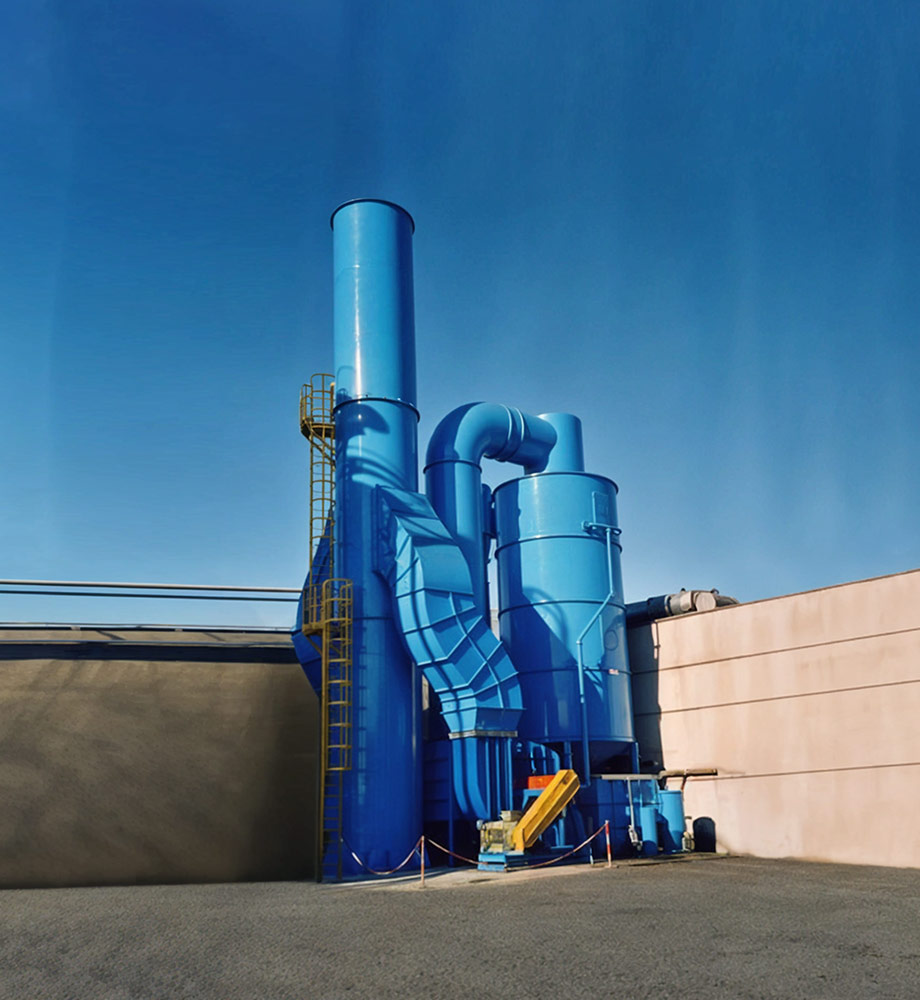Key Features
- Corrosion-Resistant Construction: FRP resins (vinyl ester/epoxy) and glass fibers resist acids, alkalis and harsh gases.
- High Strength-to-Weight Ratio: Fiberglass construction is much lighter than metal, easing installation and reducing structural support needs.
- Customizable Design: Towers can be shaped and sized to fit any space or flow requirement. Packed-bed or tray internal media optimize gas-liquid contact.
- Smooth, Nonstick Surfaces: FRP’s smooth walls prevent buildup and simplify cleaning, enhancing airflow and efficiency.
- Outdoor Durability: UV-stable topcoats and weatherproof FRP allow long life in outdoor exhaust applications.
Benefits
- Effective Pollution Removal: Capable of neutralizing strong fumes (e.g. HCl, SO₂, ammonia) and removing particulates, supporting environmental compliance.
- Low Operating Cost: Durable FRP reduces maintenance needs; lower material and transport costs (lighter weight) cut lifecycle expenses.
- Space Efficiency: Integrated wet-scrubber design saves floor space versus multiple modular units. Many systems recirculate scrubbing solution to minimize water use.
- Enhanced Safety: Resistant to corrosion leak-through, FRP prevents dangerous chemical leaks. Smooth surfaces help prevent clogging and unplanned shutdowns.
- Energy Savings: Optimized FRP flow paths improve gas distribution and reduce pressure drop (lower fan power usage).
Applications
FRP wet scrubbers are used wherever toxic or odorous gases must be removed, including chemical plants, acid manufacturers, power and incineration plants, wastewater treatment facilities, metal finishing shops, and food & beverage processors. They are ideal for neutralizing acid fumes (e.g. from pickling or plating), removing VOCs in pharmaceutical or biotech exhaust, and scrubbing ammonia or H₂S in wastewater plants.
Technical Specifications
Typical FRP wet scrubber capacities range from 500 to 100,000 m³/h. Units can be built up to 4.0 m in diameter and 15 m tall, with flanges and internal packing as needed. Construction materials include FRP or mixed FRP-lined options (e.g. PP/FRP, PVC/FRP, CPVC/FRP) to suit the chemicals in use. Maximum operating pressures are usually near 1 psig (27.7″ water column) unless custom reinforced.
Unique Selling Points
FRP wet scrubbers combine high-performance scrubbing with long-term durability. Unlike metal scrubbers that corrode quickly in acid or chlorine service, FRP towers maintain integrity for decades. They are often custom-engineered (finite-element designed) for each application, ensuring peak removal efficiency. Key USPs include ultra-low maintenance (no rusting), modular/movable design, and the ability to handle extremely corrosive or hot exhaust. Many models even incorporate heat-recovery sections or quench towers for temperature control, making them versatile solutions for stringent pollution regulations.

